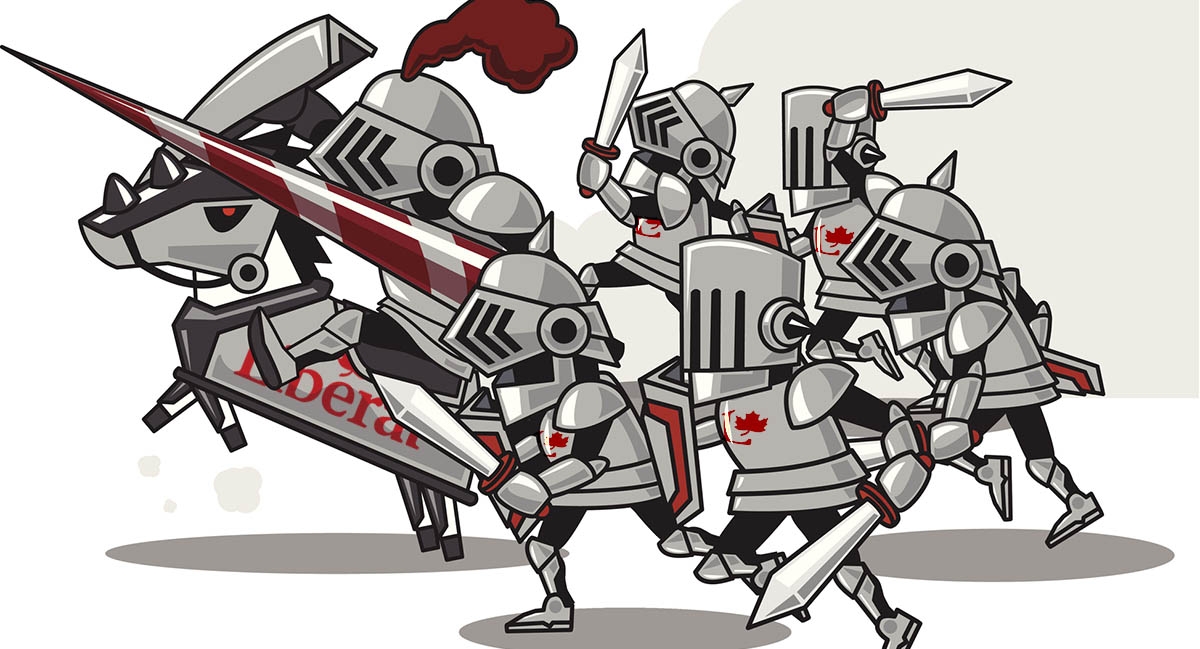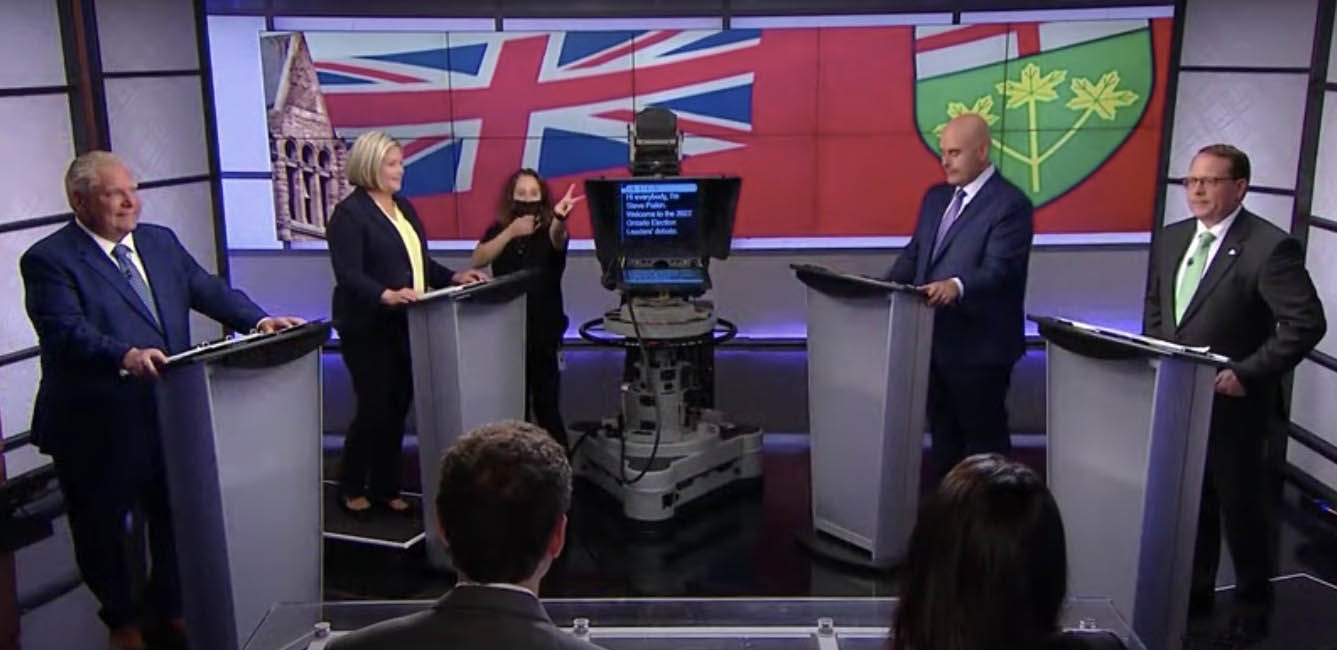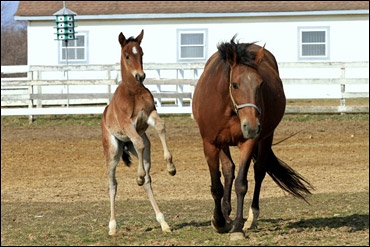
Part Two: Horse Sense & Government Nonsense
Public-Private Partnerships Are Not Subsidies
The Ontario government’s decision to end the Slots at Racetracks Program has a detrimental effect for Ontario’s vibrant horseracing and equine industries.
This is a serious problem with major ramifications. Dennis Mills, the former Liberal MP whose web site Racing Future builds awareness of Ontario’s horseracing and equine industries, points out that the industry is considered to be one of the top three in the world. He states that: “Our province has a horseracing industry that is of similar calibre to that of the United States (home to the renowned Kentucky Derby) and England (which hosts the world-famous Royal Ascot).” High-profile Canadian races like the Queen’s Plate, North America’s longest-running annual horse race, are broadcast and webcast worldwide with betting from all corners of the globe. Furthermore, Ontario has become the world’s premier harness racing destination. As a result of this importance, Ontario horseracing “is an industry that represents a huge valuable export market for Canada in terms of horses, trainers, equipment and expertise,” Mills states.
Terminating the Slots at Racetracks Program threatens the very existence of this enviable industry. As Jane Holmes vice-president of corporate affairs at the Woodbine Entertainment Group, owner of the Woodbine Racetrack in Toronto states: “You may see horseracing survive in Ontario, but it certainly will not be the international sport that it is today.” There will also be a negative impact on the purse for races. Holmes says that even “if we have enough money to survive, the purse for the surviving races will simply be too small to sustain the sport.” Put differently, without the program, the purse money will not cover the high costs associated with breeding, training, feeding, maintaining and racing a horse in Ontario. This is crucial, because over 60 per cent of the horseracing industry’s take from its share of slot machine revenue is used to pay for purses.
As Robert Wright, the former lead veterinarian for Equine and Alternative Livestock at the Ontario Ministry of Agriculture, Food and Rural Affairs and publisher of the Horse News and Views web site, explains: “Horse owners receive their share of the Slot revenue through money added to the purses and they reinvest these winnings in the local economy, purchasing everything from feed and bedding to vehicles and trailers.” Owning and maintaining a single horse costs upwards of $20,000 annually and “a reduction in purses trickles down to lower spending power.” As a result, certain rural communities that depend on this spending for their existence will likely disappear.
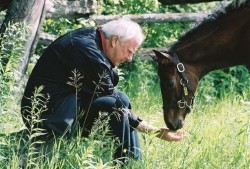
Ending the long-standing program also threatens the viability of the many industries that help support the horseracing industry. The most immediate of these is the heart and soul of the equine industry: the breeding industry — and it is particularly hard hit by the decision to end the Slots Program. Anna Meyers (of the Standardbred Breeders of Ontario Association) captures the essence of the problem by stating that “with the government’s decision, there will be a ripple effect that will be felt across the province.” But that ripple effect will likely be first felt by Ontario’s horse breeders since, as she explains: “Breeders need almost five years of lead time to respond to changing market forces.” Because the breeders were not forewarned about the cancellation of the program, they did not have the required lead time to compensate for the sudden lack of demand for race-ready horses arising from the cancellation. To make matters worse, “breeders in Ontario are sitting on roughly three years worth of horses due to the timing of the birth to yearling sales to racing process.”
Because of the prevailing climate of uncertainty, the breeding of mares and the sales of yearlings have dropped off more than 40 per cent since the program’s termination was announced, according to Robert Wright. Anna Meyers explains that not only have breeders’ sales been cut in half, but clients are refusing to pay stud fees and many of the mares that were boarded in Ontario have left the province for safer breeding markets with stable sire stakes programs.
A similar story can be told of Ontario’s veterinary industry. Like doctors, veterinarians have different specialties and areas of practice. Because of the stature of Ontario’s horseracing industry, Ontario has some of the most sophisticated and renowned equine veterinarians and veterinary facilities in North America. However, after the Slots Program is discontinued, things may very well change.
As Dr. Garth Henry, a long-time practicing equine veterinarian who owns the Russell Equine Veterinary Service located just outside Ottawa in Russell and owner of Hamstan Farm, one of the premier horseracing training facilities in eastern Ontario explains, “access to equine veterinary treatment in the province will decline substantially” as a result of the government’s decision. There will simply be a much smaller demand for the services provided by equine veterinarians. Dr. Henry states that this will lead to a “mass exodus of Ontario’s equine veterinarians,” the majority of whom will likely be forced to relocate their practices to American states like Kentucky, New Jersey and Pennsylvania which are less likely to discriminate against the horseracing and equine industries.
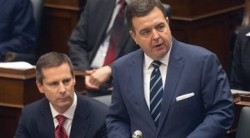
The farming industry in Ontario has also suffered from the Liberal government’s sudden cancellation of the Slots at Racetracks Program. Mark Wales, President of the Ontario Federation of Agriculture (OFA), states that “a lot of our members supply hay and oats to those who breed horses in Ontario” and that the demand for feed rises and falls with the demand for horses. Mark Wales notes that many of Ontario’s farmers will need to adjust their business models and explains that: “Farmers selling oats, hay and straw for racing will have to switch their crops to sell more crops that aren’t as dependent on the equine industry. This will represent a substantial loss of market for hay, oats and straw.”
Changing the staple crops a farmer grows is an expensive process and can be particularly difficult for those who have specialized in equine-specific crops and who may lack the skill sets and resources required to change.
In June, the Ontario government created its face-saving Horse Racing Industry Transition Panel in an attempt to find a way to ensure the survival of the horseracing and equine industry post-March 31, 2013. The panel is chaired by three knowledgeable former politicians representing the three provincial parties: Elmer Buchanan (NDP), John Snobelen (PC) and John Wilkinson (Liberal). They are tasked with creating a meaningful dialogue with the Ontario horseracing and equine industry to smooth the transition from the “dependency” of the Slots Program to what is deemed a “more sustainable” business model.
The panel has $50 million and three years to accomplish this task. Yet, the viable business model in question must be implemented before this September’s yearling sales, without which the remaining 50 per cent of Ontario’s breeding industry would likely collapse and the horseracing industry would be as defunct as Quebec’s. But even if the panel is able to reach a relevant conclusion, what will the horseracing and equine industry be able to transition to?
As Sue Leslie says on behalf of the OHRIA: “The panel and the broader provincial government need to understand that the industry is not looking for a way to transition out of existence. It is looking for a way to transition to a more sustainable but still profitable business model. I don’t see the government reversing its position and therefore it will be a huge challenge to adopt to this environment, a challenge which is simply impossible to overcome in a mere three years.”
Undoubtedly, the horseracing and equine industry knows that the stakes couldn’t be any higher. And, as Elmer Buchanan says on behalf of the panel, “we are well aware that we have a short timeline.” However, Buchanan feels that there should be a new model for the industry whose “dependency on the increased slot revenue happened by accident.”
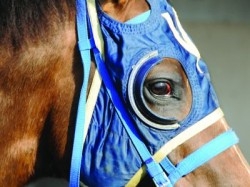
Ontario’s Minister of Agriculture, Food and Rural Affairs Ted McMeekin (now responsible for the phasing out of the Slots Program) explains what he sees as one of the biggest problems with the current program by stating that the industry “needs a path that allows it to function without being artificially propped up by the revenue from slot machines.” Although McMeekin represents the riding of Ancaster-Dundas-Flamborough-Westdale, a riding which is home to many horse farms and to Flamboro Downs, one of the province’s most popular racetracks, his description of Ontario’s horseracing industry as being “artificially propped up” is reminiscent of the flawed reasoning of Finance Minister Dwight Duncan who does not seem to understand that the Slots at Racetracks Program is a public-private revenue-sharing program and not a subsidy.
Nevertheless, Minister McMeekin’s vision for the new business model is “a model that won’t require artificially propping up the horseracing industry and that will have roughly 60 per cent of what the industry used to be, albeit running more efficiently.” This will likely be difficult to translate into reality given both the time constraints and the paltry $50 million allocated for this process. As Anna Meyers notes, “that $50 million doesn’t even begin to cover the losses that the breeding industry alone faced this year.”
Ian Russell explains why many in the industry view the transition panel as a toothless paper tiger by stating that “$50 million is a drop in the bucket compared to the billion plus dollars the industry generates for the province every year under the Slots Program.” In fact, Ed McHale of the NCRHHA is quick to point of that “the $50 million would be enough to cover the purse money at Ottawa’s Rideau Carleton Raceway but not the other tracks in the province as well.” Russell sums up the frustration felt by many in the industry when he says that “the panel is merely a way for the government to deflect criticism that it is ignoring the consequences its decision will have for the horseracing and equine industries.”
Although some in the industry are hopeful that the panel can reach an agreeable, realistic and tenable conclusion and create a business plan with input from industry members, that remains to be seen. But the buck stops with the transition panel because, as Buchanan says: “We’re not going to come out with a Plan B.” Aside from the limited funding allocated to the panel, each day that goes by without a viable new plan pushes Ontario’s once vibrant industry closer to collapse and the Ontarians who work in it closer to the unemployment line.
Continued in Part Three: Horse Sense & Government Nonsense


